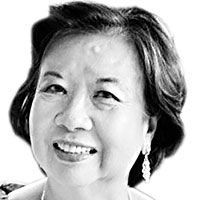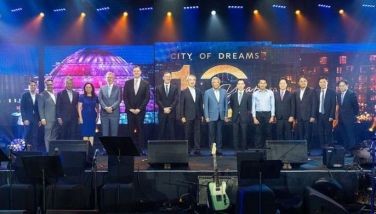A sultan of Sulu is buried in China

I have heard the story many times but today I had the chance to see it for myself. There is a splendid mausoleum built for kings by the Chinese emperor to honor the King of Sulu. The royal visitor had died while on the visit and the Chinese emperor put no stops to honor him. King Paduka Pahal would have formalized the close friendship between the two countries. They have had frequent exchanges since the Ming dynasty but these needed to be solidified by friendship.
After the feasting was over, Pahal headed for home in Sulu but he never made it. He fell ill and died in Dezhou on Sept. 13, 1417. A painting of Pahal is at the main building near the tomb. The Chinese emperor was saddened with the death of his friend who would have sealed the friendship of their kingdoms. So he ordered “an elaborate funeral with the standards of an empire.”
This was a watershed of the closeness of the friendship between China and the Philippines. His descendants became citizens of of Dezhou, China. The Philippine media delegation met one of them at a lauriat in the hotel. The ancient ties between the two countries is immortalized in that mausoleum in the district of Dezhou, Shandong province not far from Beijing.
Before Shandong we were at Suzhou, the hometown of the world famous architect Lei Pe of the glass triangle he built in front of the Louvre.
Each time I visit China my impressions crowd into one theme – it is of a nation both struggling to marry both the old and the new. In this visit our first stop was the city of Suzhou a bus ride from the Shanghai airport. It is like going to Baguio said someone from our group, “except we miss the bumps from the inferior asphalt roads of graft-ridden Philippines.” Suzhou is definitely of the new. On the way we rode past wide avenues with building upon building of condominiums and housing estates.
There were also some very elegant buildings so I asked our guide if these were government-owned. No he said, these were for the rich. He was quick to remind me though that all land is owned by the government even if these are private homes.
As an aside, he said the development of infrastructure like the miles and miles of smooth highways was made possible through a progressive interpretation of eminent domain.
This is one of the reasons why the building of better infrastructure apart from fighting graft seems an impossible task. We cannot widen roads with private property blocking development. Not so in China where they plan for many years and programs are continued and followed through from administration to administration. The wide highways in China are definitely of the new and more progressive side of the country.
So, too, was the Shuzhou Industrial Park. It was a jungle of buildings housing this superpower’s high tech industries. As the brochures say, the industrial park was built especially for research and innovate on information technology and biotechnology industries.
It has the bright lights of a modern city but a beautiful lake peeps through the fringes, Since I am not a techie or a modernist I was not awed by all this high tech. It looked much like other industrial parks in other parts of country. It may have been an exhibit of the facilities that made China wealthy and powerful but I was looking for something more humane, something I could see that was more than the dazzle of high tech industries. My hosts may not be too pleased that I should not have marveled at this vision of China’s innovations and foray into modernity.
Not that I was not impressed.
It was all too impressive. But I did find it, not in the buildings that housed the latest technology and its wires and tubes. It was at the center of the main exhibition hall of the industrial Park in Suzhou – a huge wall to wall picture of Deng Xiaoping and Lee Kuan Yew shaking hands to seal the project of cooperation. Both have died but that one picture told it all. It was cooperation, a willingness to learn and teach each other on how best to exchange knowledge and expertise.
As we walked through the industrial park I was told that the water bordering the modern spectacle was the beautiful Jinji Lake.
The China-Singapore Suzhou Industrial Park is a lesson on what is possible when people get together. Of course Lee Kuan Yew and Deng Xiaoping were two of a kind. The kind of personalities that looked for solutions and possibilities when presented with problems. That was what made Suzhou Industrial Park such a success.
As a Filipino, my thoughts go back to my own country as we moved from room to room and building to building thinking in the industrial park what Filipinos could have done if they had leaders like Lee Kuan Yew and Deng Xiaoping. Instead we are embroiled in an intractable ownership dispute with China over the Spratlys. Who said we could not cooperate with each other even if we had differences.
As Deng Xiaoping famously said, “Let us shelve the differences first and leave ownership issue to the next generation. In the meantime we look for solutions where both can do something together.”
The industrial park is the largest economic and technological cooperation project between China and Singapore. The China-Singapore cooperation area covers 8,000 hectares out of the Suzhou Industrial Park’s total jurisdiction area of 28,800 hectares.
The majority shareholders of the project include a China consortium, which holds 52 percent of the project, and a Singapore consortium holding 28 percent of the project in which Sembcorp has a 8.34 percent share. It was a commercial venture and a question of how the joint venture could be divided between them in work and investments. I think that was the idea that Manuel V. Pangilinan had in mind about the joint oil venture in the Spratlys.
They would need commercial lawyers who would thresh out the division of investments and returns while the Philippine claim remains intact. Possibly the claim can be turned into the Philippine contribution to the joint venture. It would have been infinitely better if that were the path taken instead of bringing the claim to the UNCLOS.
- Latest
- Trending

























